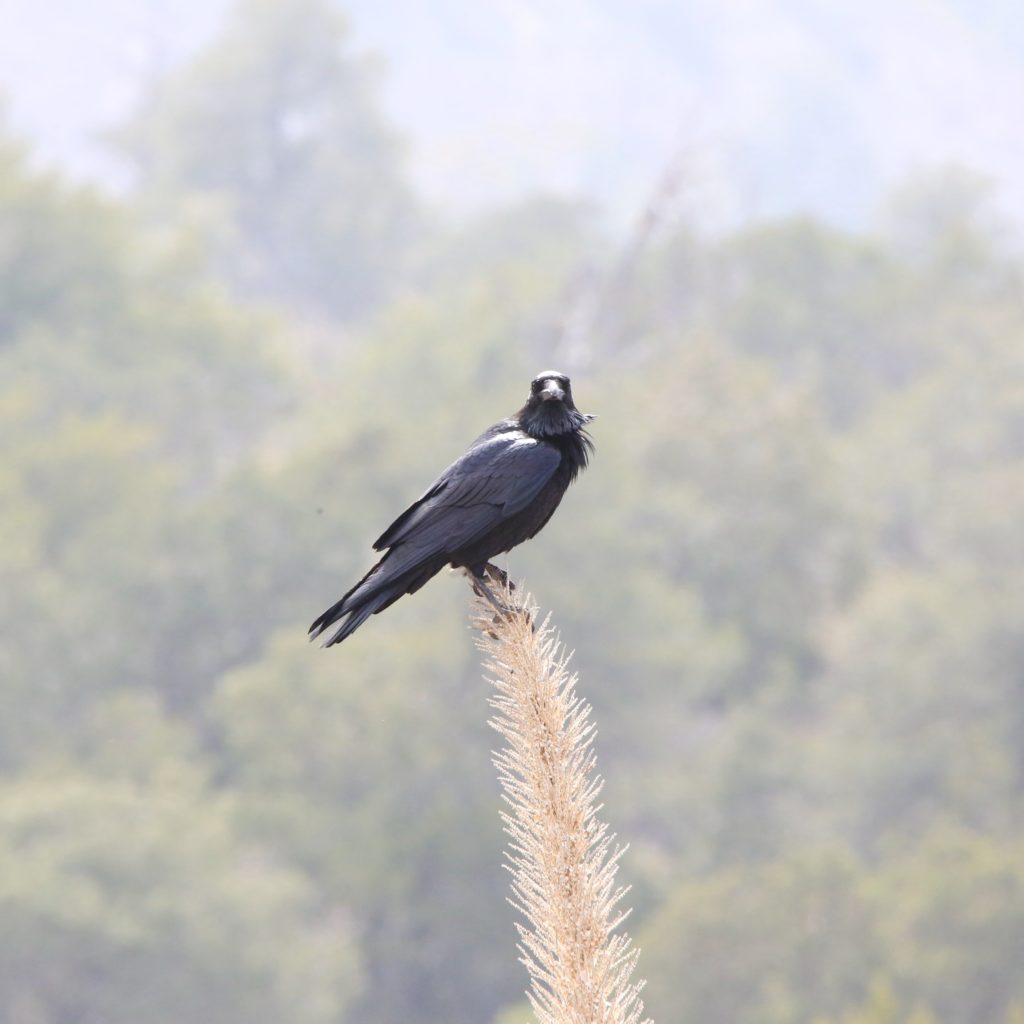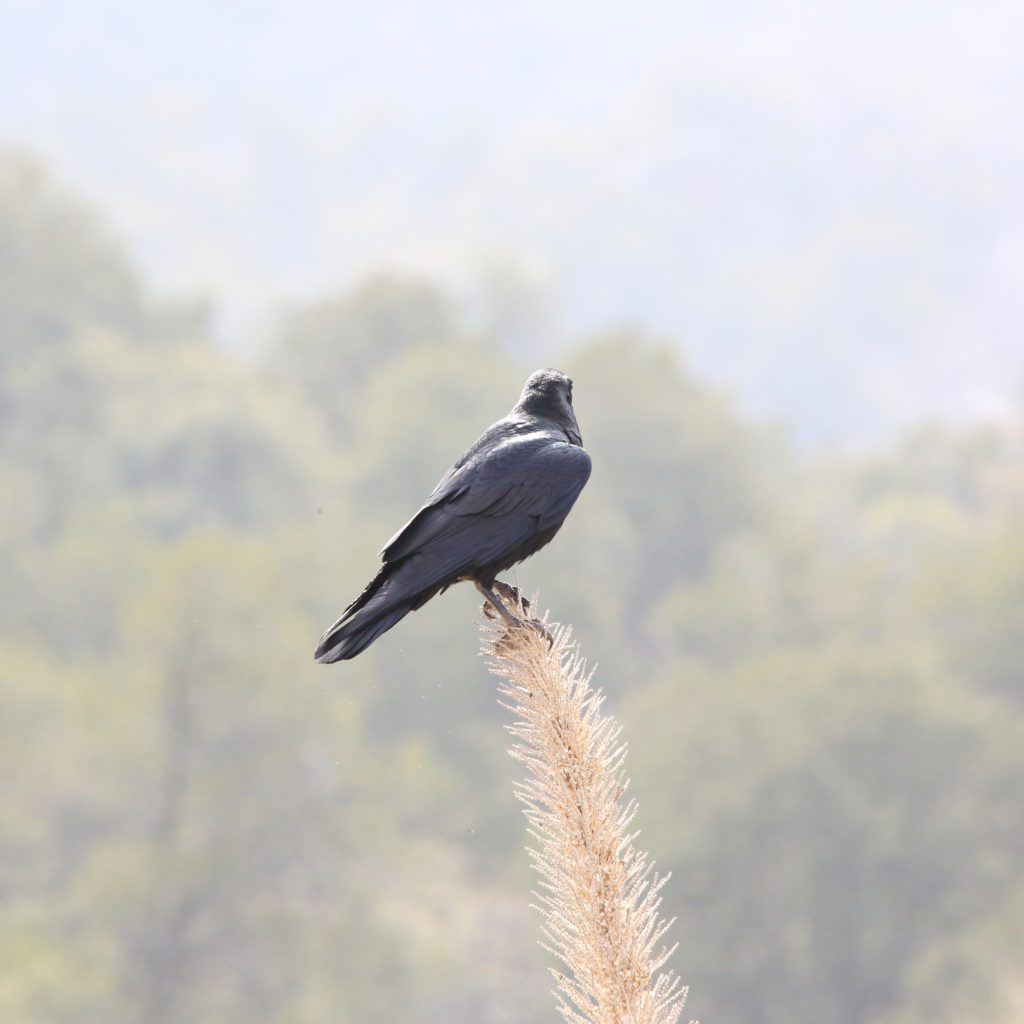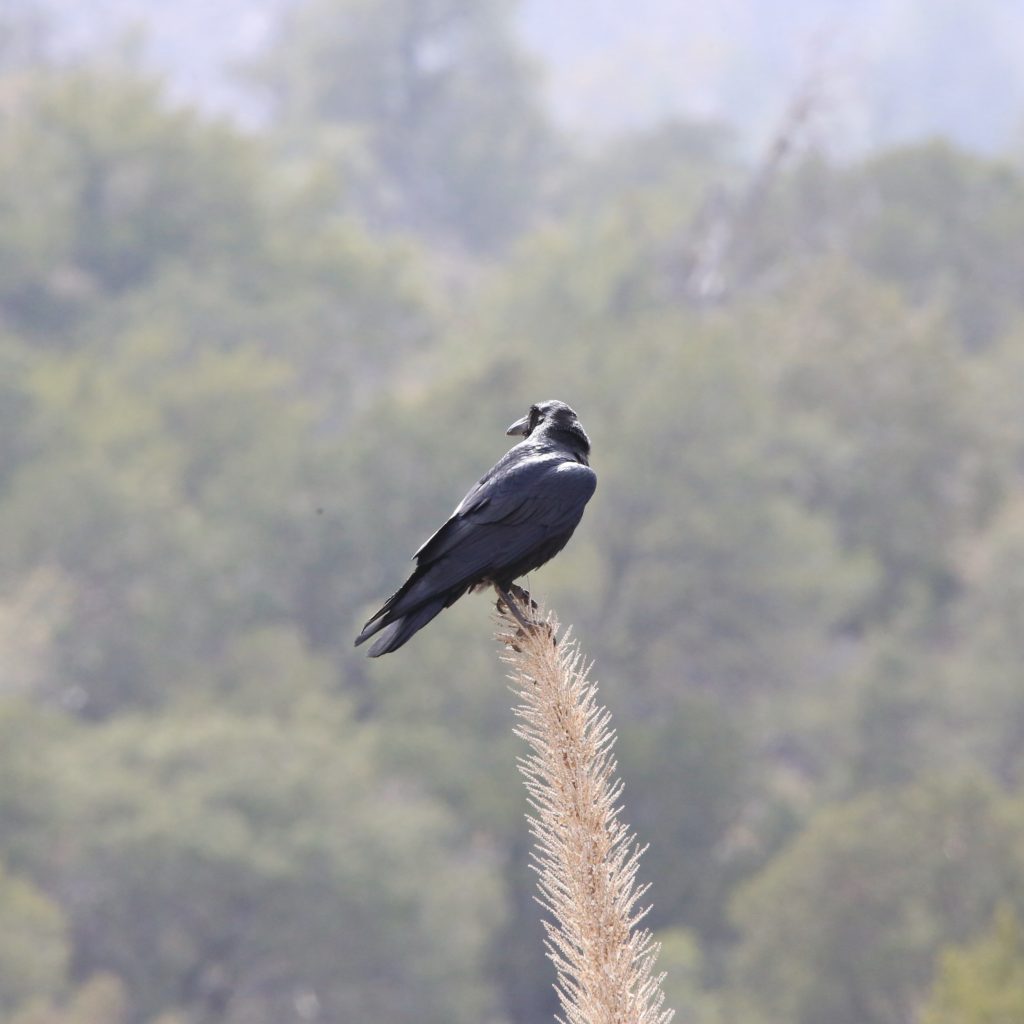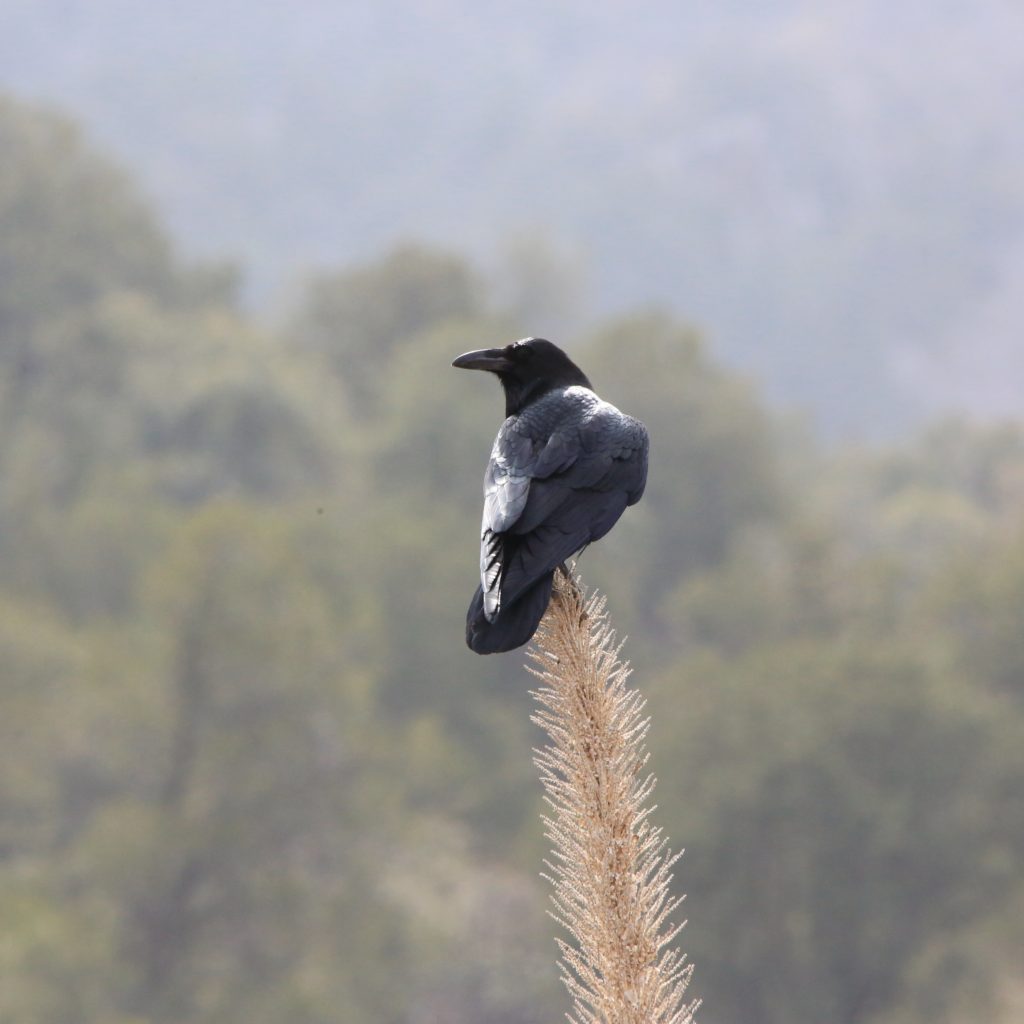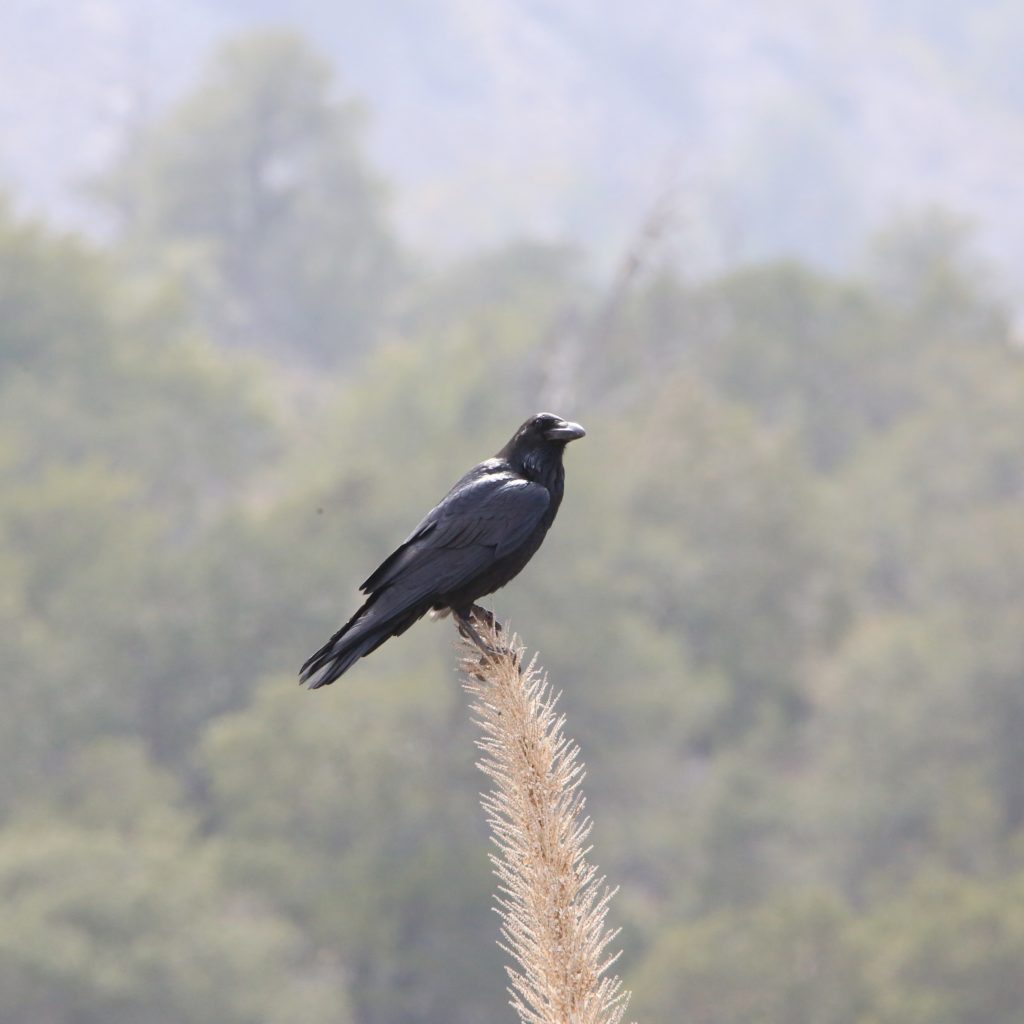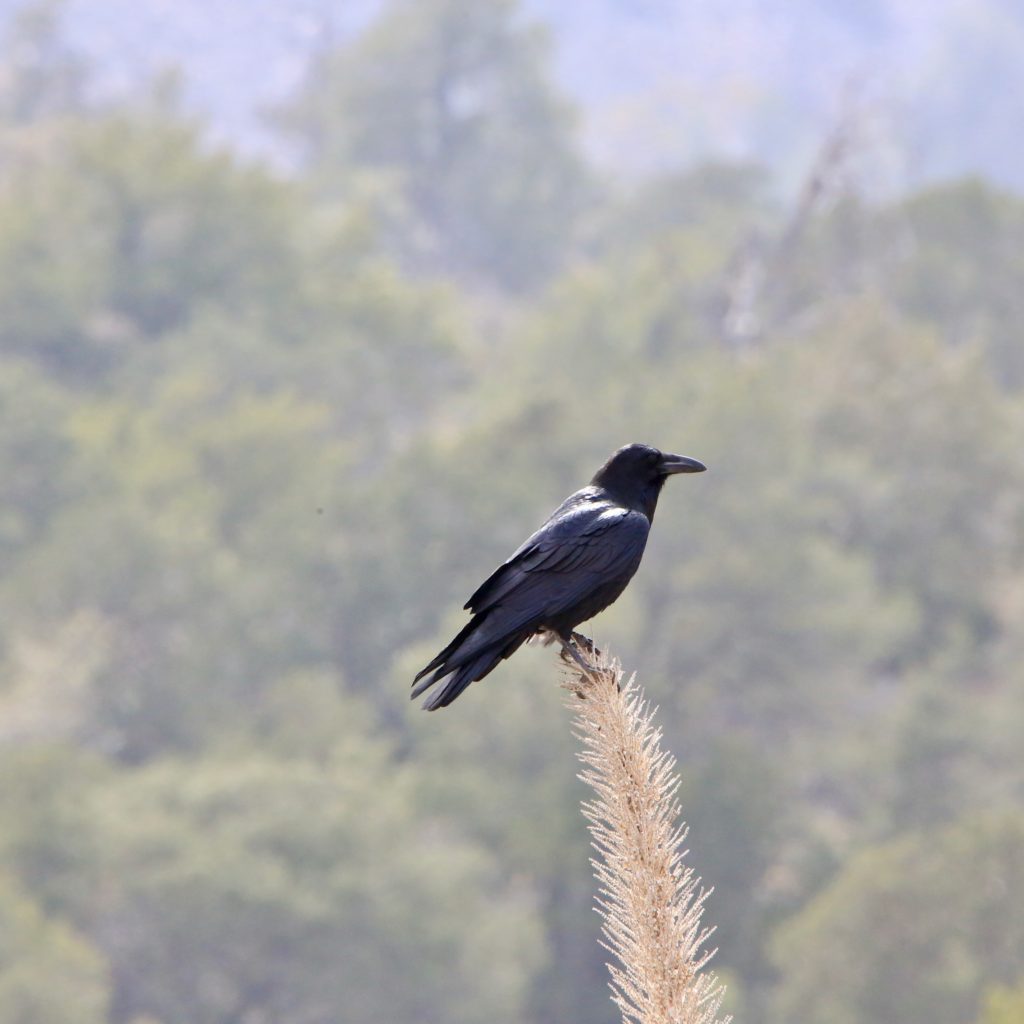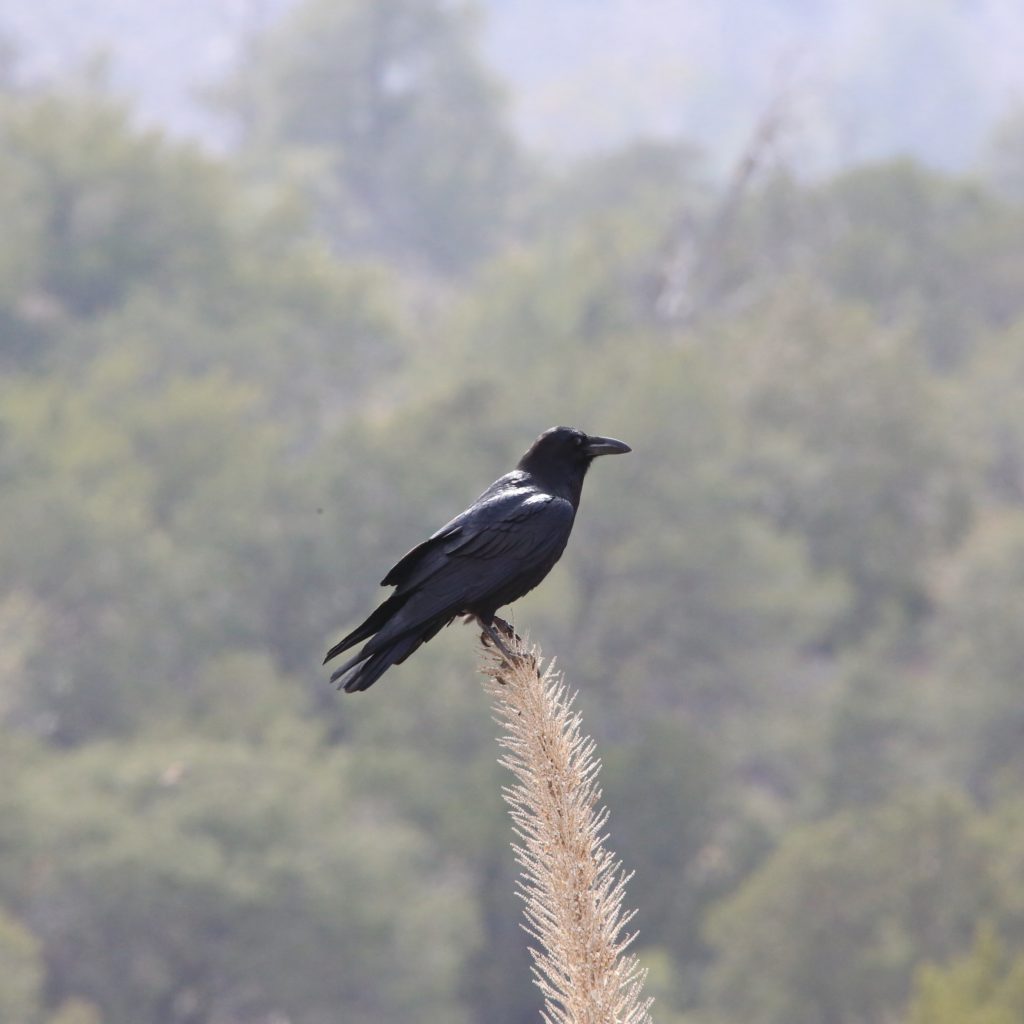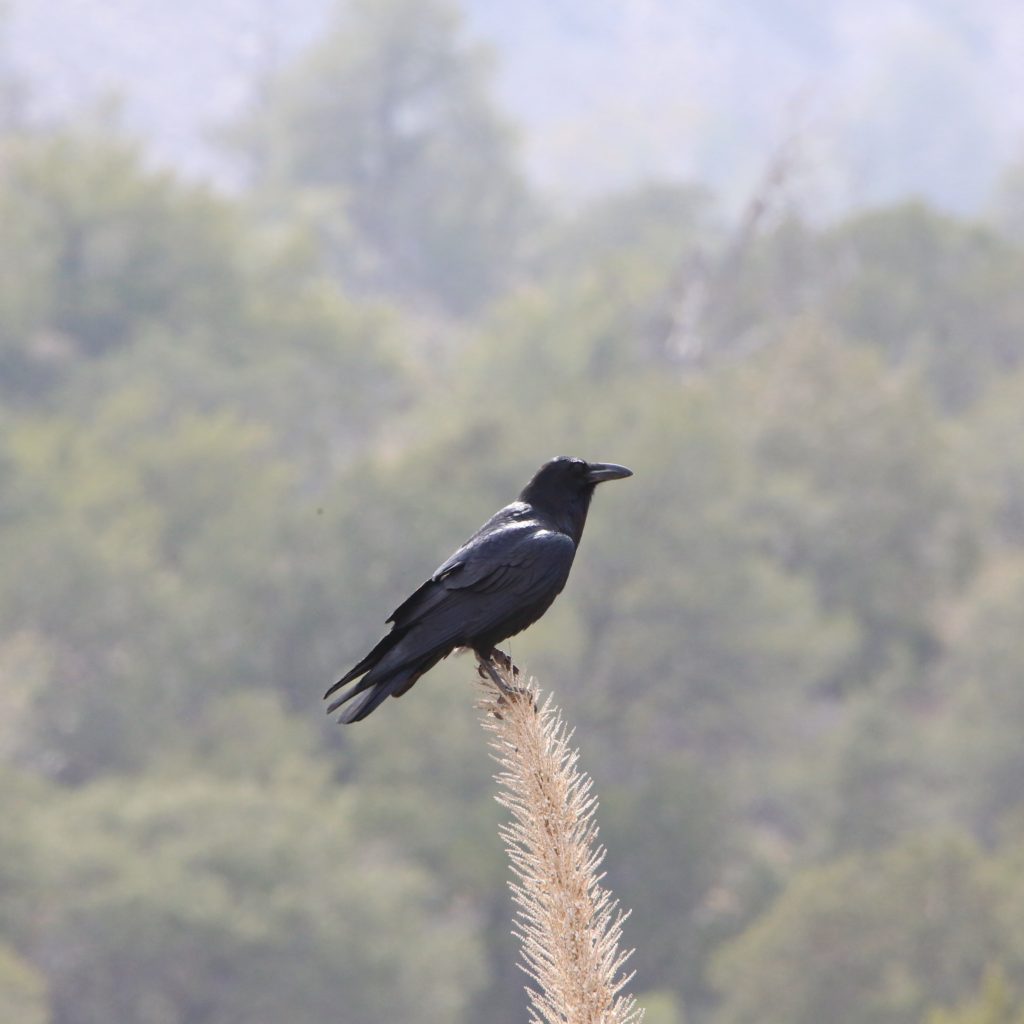
Common Raven
A Common Raven is a fun bird to see while bird watching. Below are some tips to help you identify Common Ravens. We have also put together a list of fun Common Raven t-shirts, Common Raven bird patches, birdhouses, bird feeders, binoculars, stickers, and other fun bird watching items.
About Common Ravens
The Common Raven is a passerine bird found in North America, Siberia, Northeast Asia, and Wales. It is believed to be the heaviest passerine bird.
Description and Identification
Common Ravens are large birds that are 21-26 inches long, with a wingspan of 45-51 inches. Being one of the heaviest passerines, these birds can weigh up to 4.4 pounds. The size of these birds can vary according to the regions they reside in. Common Ravens found in warmer climates are generally smaller, while the ones located in colder regions are larger. These birds have large and curved bills and long tails. They have an iridescent black plumage all over their body and dark brown irises.
Common Raven Size
Length: 54 and 67 cm
Weight: 1.2 kg
Wingspan: 115 to 150 cm
Both the males and females are of the same average size.
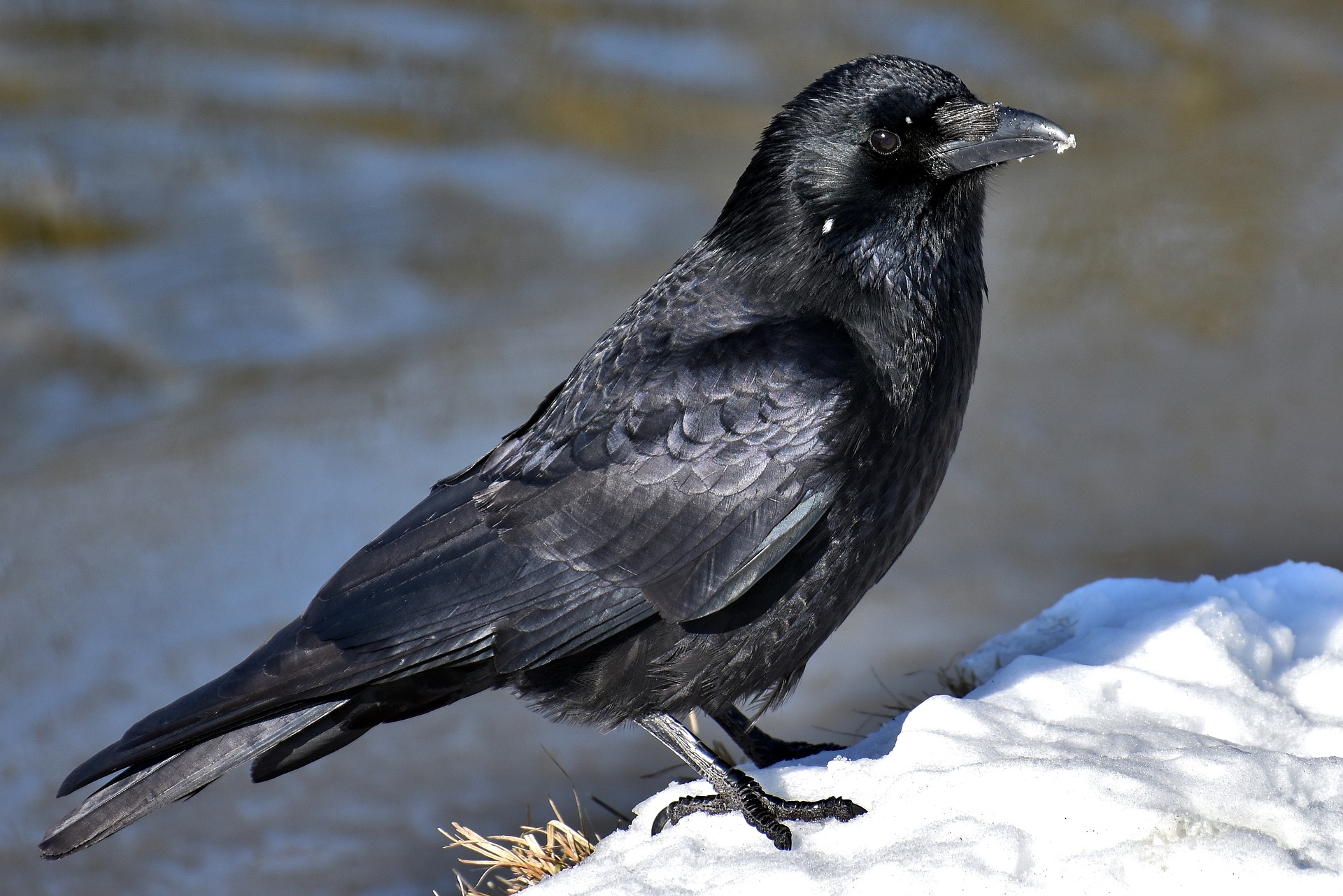
Common Raven Appearance
It has a pure black appearance, with shaggy feathers around its throat and above its bill. It is distinguished from other ravens and crows by these feathers and its lack of a diamond-shaped tail. They also have a heavier black beak, compared to other crows and ravens.
Common Raven Feeding
In terms of their diet, Common Ravens are highly opportunistic in nature. The diet of these
omnivorous birds changes according to their location or the season. In certain areas, these birds
are majorly scavengers that feed on carrion, and the maggots and beetles associated with the
carrion. These intelligent birds have also been noticed following animals till they die so that they
can scavenge them. Small invertebrates, reptiles, mammals, and amphibians make up the rest of
their animal diet. Common Ravens also commonly eat the eggs of other birds, and sometimes
smaller birds if the opportunity presents itself. The plant portion of their diet consists of grains, fruits
, and berries. These birds are also observed to cache food for later when they locate a large supply
of food.
They are omnivorous feeders and they mainly eat insects, some invertebrates, maggots, seeds, grains, berries, and beetles. In some places, they are scavengers and feed on leftovers and garbage.
Common Raven Habitat
As Common Ravens are found throughout the world, they inhabit various types of habitats. These
birds prefer areas with open landscapes such as seacoasts, riverbanks, cliffs, plains, deserts, open
woodlands, and treeless tundra. Except for rainforests, these birds can be found anywhere. A large
portion of Common Ravens can be found in coastal areas due to the easy accessibility of food and
water. Another advantage of coastal areas is the stable weather pattern with the absence of
extreme temperatures. Although these birds are acclimated with a number of habitats they are
distressed if major changes occur in the habitat in which they reside.
The Ravens make their nests on top of utility poles, old machines, and some scarcely populated treetops in arid or semi-arid regions. However, before the nest building begins, the mated pair engages in a territorial fight against other pairs to take up territory. Afterward, they protect their nests viciously.
Range and Migration
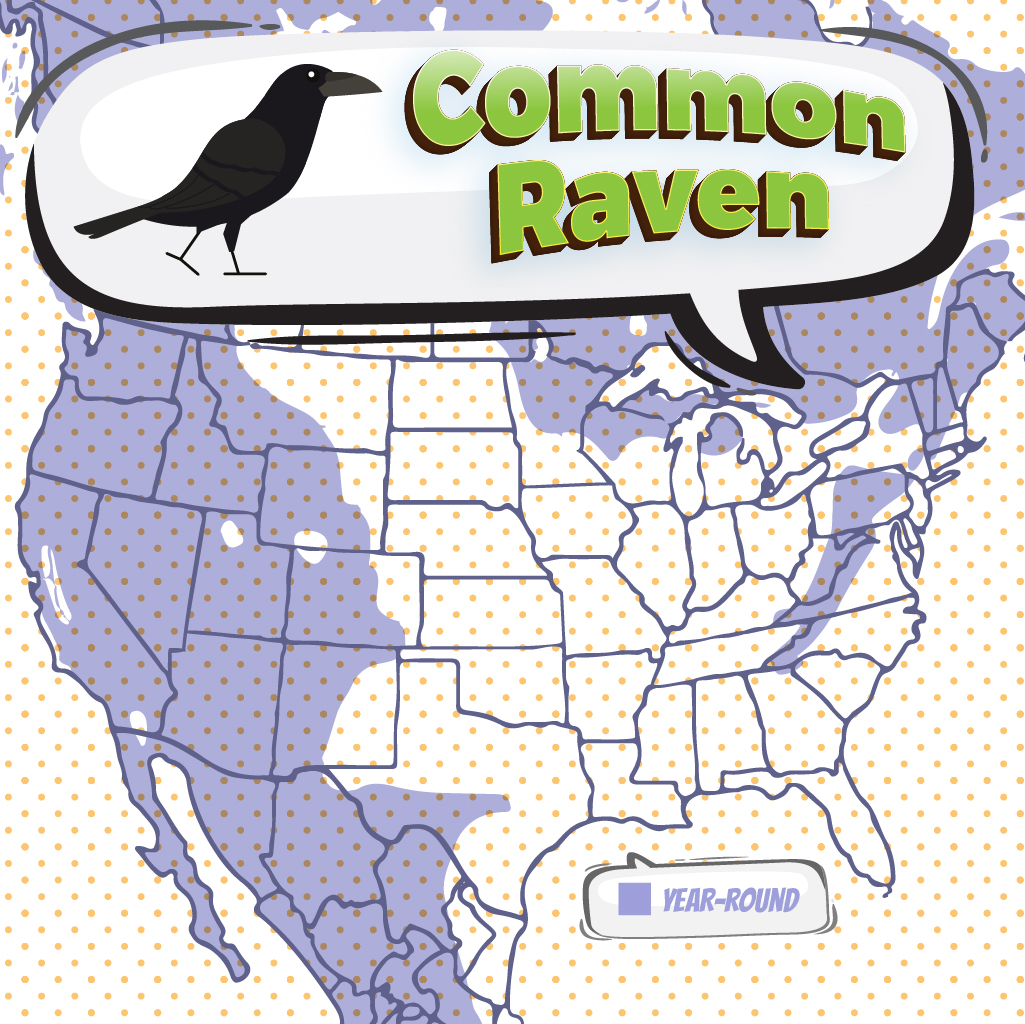
Common Ravens are large passerine birds that are widespread throughout the world. Areas in
which these birds are common are Western Africa, Iceland, northern Scandinavia, northern
Europe, India, and the North and Central America. Common Ravens usually do not migrate, with
the exception of some northern birds which may travel south for winters.
Common Raven Life and Behavior
They are partially social birds and live and travel in mated pairs. At times, the young ravens may for small flocks for protection as they travel until they are old enough to protect themselves or they get mates.
Common ravens begin courting at a very early age, although the actual bonding comes 2 or 3 years later. The courting males perform aerial shows, shows of intelligence, and the ability to provide food in an attempt to engage females.
Females lay between 3 and 7 pale blue eggs, which they incubate for 18 to 21 days. The males act as guards to watch over the female and the young. The young fledge at 32 to 45 days, after which they are ready to leave the nest.
Common Raven Nesting
Common Ravens begin courtship as juveniles, but they do not bond for another 2-3 years. These
birds display a number of courtship behaviors such as aerial acrobatics, demonstrating their
intelligence, and food offerings to the opposite gender. Although pairs often stay together for years,
non-monogamy has been observed in these birds. Common Ravens build their nests on areas of
high elevations such as cliffs, billboards, telephone poles, and long trees. Males gather nest
materials for the females to construct the nests. These materials can include sticks from old plants,
wires, bones, trash, fur, and sticks broken off from live plants. It typically takes 9 days for Common
Ravens to build their nests. After an incubation period of 20-25 days, these birds lay from 3-7 eggs.
Both parents take care of the nestlings for a period of 5-7 weeks, following which younglings leave
the nest.
Ornithology
Bird Watching Academy & Camp Subscription Boxes
At Bird Watching Academy & Camp we help kids, youth, and adults get excited and involved in bird watching. We have several monthly subscription boxes that you can subscribe to. Our monthly subscription boxes help kids, youth, and adults learn about birds, bird watching, and bird conservation.
Bird Watching Binoculars for Identifying Common Ravens
The most common types of bird-watching binoculars for viewing Common Ravens are 8×21 binoculars and 10×42 binoculars. Bird Watching Academy & Camp sells really nice 8×21 binoculars and 10×42 binoculars. You can view and purchase them here.
Common Raven T-shirts
If you love the Common Raven you should purchase a Bird Watching Academy & Camp T-shirt. To help support bird conservation we donate 10 percent to bird conservation activities.
Common Raven Iron On Patches
Kids, Youth, and Adults love to collect our Bird Watching Academy & Camp iron-on patches. Our bird-watching patches help you keep track of the birds you have seen and identified. You can also display the patches on our Bird Watching Academy & Camp banners.
The Common Raven is a great iron-on patch to start your collection with. The patches are durable and can be sewn on or ironed on to just about anything.
Common Raven Stickers
Stickers are a great way for you to display your love for bird watching and the Common Raven. We sell a monthly subscription sticker pack. The sticker packs have 12 bird stickers. These sticker packs will help your kids learn new birds every month.
Bird Feeders for Common Raven
There are many types of bird feeders. Here are our favorite bird feeders for your backyard. We use all of these bird feeders currently. Kids will have a great time watching birds eat at these bird feeders. Using this collection of bird feeders will provide a wide variety and many types of birds.
Best Bird Houses for Common Raven
There are many types of birdhouses. Building a birdhouse is always fun but can be frustrating. These 4 birdhouses have become our favorites. Getting a birdhouse for kids to watch birds grow is always fun. We spent a little extra money on these birdhouses but they have been worth the higher price and look great.


